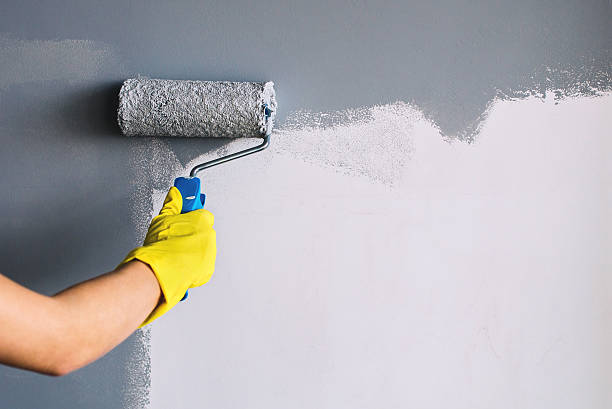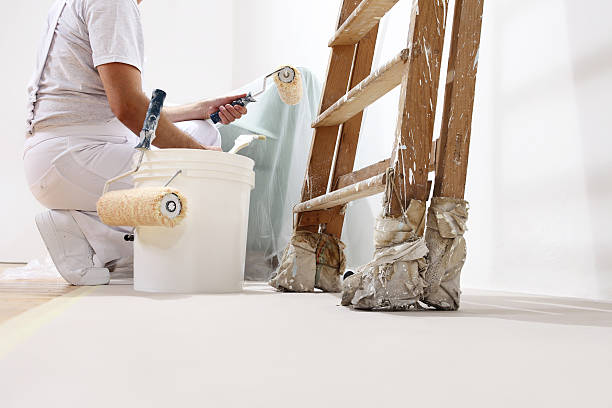

Color theory is the study of how colors interact with each other and how they can be combined to create visually appealing combinations. Understanding the basics of color theory is essential for creating harmonious and balanced color schemes.
There are several key principles of color theory that can help guide us in our understanding of how colors work together. The first principle is the color wheel, which is a visual representation of all the colors in the spectrum. By familiarizing ourselves with the color wheel, we can learn about primary, secondary, and tertiary colors, as well as complementary and analogous colors.
Complementary colors are located opposite each other on the color wheel and create high contrast when paired together. Analogous colors, on the other hand, are located next to each other on the color wheel and create a more subtle and cohesive look when combined.
Another important aspect of color theory is understanding warm and cool colors. Warm colors like reds, oranges, and yellows evoke feelings of energy and excitement, while cool colors like blues and greens have a calming effect.
By applying these principles of color theory to our design projects, we can create dynamic and visually pleasing color schemes that enhance our work. Whether we are designing a website, painting a room, or choosing an outfit, having a basic understanding of color theory can help us make informed decisions about which colors to use together.
In conclusion, understanding the basics of color theory is crucial for creating successful designs. By learning about concepts like the color wheel, complementary and analogous colors, and warm versus cool tones, we can harness the power of color to communicate emotions and create impactful visuals. So next time you're faced with choosing a color scheme for your project, remember to think about what you've learned from studying color theory.
Monochromatic color schemes are all about simplicity and harmony. These color schemes use variations of a single hue, creating a cohesive and soothing aesthetic. By sticking to one color family, monochromatic schemes can create a sense of unity and balance in any space.
One of the benefits of using a monochromatic color scheme is that it can make a room feel larger and more spacious. Without the distraction of different colors competing for attention, the eye is able to focus on the overall design and architecture of the space. This can be especially effective in smaller rooms or spaces where you want to create an open and airy feeling.
Another advantage of monochromatic color schemes is their versatility. Whether you prefer bold and vibrant colors or soft and muted tones, there is a monochromatic palette for every style preference. From deep navy blues to soft blush pinks, the possibilities are endless when working with one color family.
In addition to being aesthetically pleasing, monochromatic color schemes can also create a sense of calm and relaxation. Because all the colors in the scheme are related, they work together harmoniously to create a tranquil atmosphere. This makes them ideal for spaces where you want to unwind and de-stress, such as bedrooms or living rooms.
Overall, monochromatic color schemes offer a simple yet effective way to bring cohesion and serenity to any space. Whether you're looking to make a small room feel larger or create a peaceful retreat in your home, consider incorporating a monochromatic palette into your design scheme.

When it comes to hiring a professional painter for exterior projects in Overland Park, the average cost can vary depending on several factors.. These factors can include the size of the project, the quality of materials used, and the experience level of the painter.
On average, homeowners in Overland Park can expect to pay anywhere from $1,500 to $4,000 for an exterior painting project.
Posted by on 2024-04-25

When it comes to boosting your curb appeal in Overland Park, trendy exterior paint ideas can make a huge difference.. The color of your home's exterior can have a major impact on its overall appearance and can help set the tone for the rest of your property.
One of the first things to consider when choosing a trendy exterior paint color is the style of your home.
Posted by on 2024-04-25
Analogous color schemes refer to a harmonious combination of colors that are closely related on the color wheel. This type of color scheme typically includes three or more adjacent colors, creating a sense of unity and cohesion in a design or artwork.
One of the key benefits of using analogous color schemes is their ability to create a soothing and balanced visual experience. By choosing colors that are close to each other on the color wheel, designers can easily create a sense of continuity and flow in their work.
Another advantage of analogous color schemes is their versatility. While they are often used to create subtle and understated designs, these color combinations can also be vibrant and dynamic when paired with contrasting elements.
In addition, analogous color schemes allow for easy experimentation with different shades and tones within the same family of colors. This flexibility makes it easier for designers to achieve the desired mood or atmosphere in their projects.
Overall, analogous color schemes offer a timeless and classic approach to color theory that can be applied to various design disciplines, from graphic design to interior decorating. Whether used for creating a serene and calming environment or making a bold statement, these harmonious combinations never fail to impress with their aesthetic appeal.
Complementary color schemes are a popular choice in the world of design and art. These schemes involve pairing colors that are located opposite each other on the color wheel, creating a dynamic and eye-catching contrast. The high level of contrast between complementary colors makes them perfect for grabbing attention and creating visual interest.
One of the key benefits of using complementary color schemes is that they can create a sense of balance and harmony in your designs. When used effectively, these colors can help to draw the viewer's eye to specific areas of an image or piece of artwork. They can also add depth and dimension, making your designs more visually appealing.
Another advantage of complementary color schemes is their versatility. Whether you're working on a logo, website, or painting, complementary colors can be used to create a wide range of moods and effects. From bold and vibrant to subtle and harmonious, the possibilities are endless when it comes to using complementary color schemes in your work.
Overall, complementary color schemes are a powerful tool for any designer or artist looking to create impactful and visually striking work. By understanding how to effectively use these contrasting colors in your designs, you can take your work to the next level and leave a lasting impression on your audience.
Triadic color schemes are a popular choice in the world of design and art. This particular scheme involves using three colors that are evenly spaced around the color wheel, creating a harmonious and balanced look. The key to successfully implementing a triadic color scheme is choosing colors that complement each other while also providing contrast.
One of the benefits of using a triadic color scheme is that it allows for creativity and versatility. By selecting three distinct colors, designers can create visually appealing compositions that stand out and make a statement. Additionally, this type of color scheme offers plenty of room for experimentation, as there are endless possibilities for combining different hues.
Another advantage of triadic color schemes is their ability to evoke certain moods or emotions. Depending on the specific colors chosen, the overall aesthetic can range from vibrant and energetic to calm and soothing. This versatility makes triadic color schemes suitable for a wide range of projects, from branding and advertising to interior design and fashion.
In conclusion, triadic color schemes offer an exciting opportunity for designers to play with color in unique and creative ways. With their harmonious balance and potential for expression, these schemes are sure to continue captivating audiences across various industries for years to come.
Split-complementary color schemes are a harmonious way to combine colors in design and art. This type of color scheme involves choosing a base color, and then selecting two colors that are located on either side of its complement on the color wheel. The result is a visually appealing combination that offers both contrast and balance.
The split-complementary color scheme is a great choice for those who want to add some interest to their designs without overwhelming the viewer with too many competing colors. By using just three main colors, this scheme allows for a cohesive look that still has enough variety to keep things interesting.
One of the key benefits of the split-complementary color scheme is its versatility. Whether you're designing a website, creating a piece of artwork, or decorating a room, this color scheme can be adapted to suit any style or mood. For example, pairing a warm base color like red with cool blue-greens can create a calming and tranquil atmosphere, while combining a cool base color like green with warm oranges and yellows can evoke feelings of energy and vitality.
Overall, split-complementary color schemes offer a creative way to play with color in your designs. By understanding how different hues interact with each other on the color wheel, you can create visually striking compositions that appeal to the eye and evoke specific emotions or moods. So next time you're looking for an interesting way to add some depth and complexity to your designs, consider giving the split-complementary color scheme a try!
Choosing the right color scheme for any project can be a daunting task, but with a few tips in mind, it can become much easier. The first step is to consider the purpose and message of your project. Are you trying to convey a sense of calmness and relaxation, or do you want to evoke energy and excitement? Once you have determined the mood you want to create, you can start selecting colors that align with that vision.
Another important factor to consider is the target audience. Different colors can have different meanings and associations across cultures, so it's important to choose colors that will resonate with your intended viewers. For example, while red may symbolize passion and power in Western cultures, it can represent luck and happiness in Eastern cultures.
It's also helpful to take into account color theory principles such as complementary colors (colors opposite each other on the color wheel) or analogous colors (colors next to each other on the color wheel). This can help create harmony and balance in your design.
Lastly, don't be afraid to experiment and trust your instincts. Sometimes the most unexpected color combinations can yield striking results. And remember, at the end of the day, choosing a color scheme is a personal decision – go with what feels right for you.
By keeping these tips in mind and being mindful of your project's purpose, audience, and design principles, you'll be well on your way to selecting the perfect color scheme for your next project.